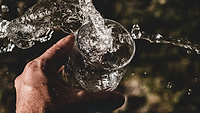The U.S. Environmental Protection Agency (EPA) today released a plan that serves as a national call to action, urging all levels of government, utilities, community organizations, and other stakeholders to work together to increase the safety and reliability of drinking water.
“Ensuring that all Americans have access to safe drinking water is an absolute top priority for EPA,” says EPA Administrator Gina McCarthy. “We must work collectively to seize opportunities for progress, partnership, and innovation in order to continue to provide our citizens with the safest drinking water in the world.”
The plan includes six priority areas and identifies proposed actions for each area:
- Building capacity for water infrastructure financing and management in disadvantaged, small, and environmental justice communities: Actions include launching a national initiative to promote regional partnerships, reinvigorating training programs for system operators, sharing best practices and establishing an online water funding portal.
- Advancing oversight of the Safe Drinking Water Act: Actions include electronic reporting for Safe Drinking Water Act compliance data, releasing triennial EPA reviews of state programs, and developing indicators to identify troubled systems.
- Strengthening source water protection and resilience of drinking water supplies: Actions include updating and acting on source water vulnerability assessments, building collaborative local partnerships for watershed protection, developing an initiative to enhance community resilience to climate and extreme weather events, launching source water monitoring pilot projects and promoting water efficiency and reuse.
- Addressing unregulated contaminants: Actions include strengthening the effectiveness of the health advisory program, prioritizing work on contaminants that pose the most significant risk, and promoting the development of low cost and innovative technologies that may remove a broad range of contaminants.
- Improving transparency, public education, and risk communication on drinking water safety: Actions include strengthening transparency and public education, developing indicators to enhance how data is presented on the internet and improving risk communication tools.
- Reducing lead risks: Actions include the consideration of critical options in revising the Lead and Copper Rule and continuing work to improve implementation of the current rule through enhanced oversight, identifying best practices on lead service line replacement, and revising guidance for schools.
The plan reflects input from state, local, and tribal government officials; drinking water utilities; community groups; and environmental organizations. While EPA and partners have already begun to take some actions, others will require additional resources and further stakeholder engagement. EPA recognizes that partnership and collaboration across all levels of government, utilities, the private sector, and the public will be essential to the success of the plan.
In tandem with the development of the plan, the President’s Council of Advisors on Science and Technology (PCAST) undertook a study on science and technology for drinking water safety. The PCAST’s recommendations complement and support EPA’s plan.
Today, Americans depend on 152,000 public drinking water systems and consume more than one billion glasses of tap water a day. EPA has established drinking water standards for more than 90 contaminants, and compliance data show that more than 90 percent of the nation’s water systems consistently meet those standards. While America’s drinking water remains among the safest in the world, the drinking water sector faces a growing array of challenges including aging infrastructure, limited funding and management capacity, emerging contaminants, pollution of source water, and the impacts from drought and other climate events. These challenges can be particularly acute in small and disadvantaged communities.
See the EPA's Drinking Water Action Plan.




